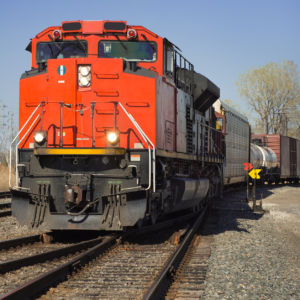President Joe Biden often says, “Don’t compare me to the Almighty, compare me to the alternative.” And transportation experts say the same rule should be applied to rail.
When a 150-car train derailed in the small, blue-collar town of East Palestine, Ohio, it was a tragedy for that community. Everyone agrees that Norfolk Southern railroad and the federal government should do their part to make these families whole.
But economists and transportation experts warn that the wrong way to respond to this tragic accident is with misinformation and political spin. Focus on the facts, says Iain Murray with the Competitive Enterprise Institute, and how rail compares to the available transportation alternatives.
“Most rail accidents are unique. Accident investigators need time to discover exactly what happened and in what sequence. They should be given the time to do that,” Murray said. “Only rarely is a systemic defect found that requires an industrywide regulatory response. This may be one of those occasions, but we should let the investigators do their work without rushing to judgment.”
In the case of East Palestine, media reports have rushed to several judgments, critics say. One has declared rail safety inadequate, accusing freight rail companies of dragging their feet on new, safety-improving technology.
But the data tell a different story. Since 1980, train derailments have dropped by more than 80 percent. Over that period, the total ton-miles of freight rose by more than 50 percent. More trains hauling more goods, but 80 percent fewer cars derailed.
And all this happened during a period of rail industry economic deregulation that began under President Ronald Reagan, which research shows led to stronger investment and better safety.
Transportation Secretary Pete Buttigieg has accused the rail industry of lobbying to repeal rules that would have increased safety, particularly a requirement for electronically controlled pneumatic (ECP) brakes. But as Marc Scribner, a senior transportation policy analyst for the Reason Foundation, points out, it was the government’s own analysis that failed the ECP brakes on a benefit/cost analysis.
“But even if the ECP brake requirements had survived the revised benefit/cost analysis, they wouldn’t have applied to the train that derailed in East Palestine because that train did not contain enough hazardous materials railcars to trigger those rescinded requirements,” Scribner said. “National Transportation Safety Board Chair Jennifer Homendy took the unusual step of going on Twitter before her agency’s preliminary report was out to denounce these false claims about the ECP brake requirements as ‘misinformation.’”
What about the number of rail workers? Are railroads shorting staff and reducing safety?
Rail unions have been pushing for years to freeze the current standard of two people in the locomotive into place. Republican senators J.D. Vance (Ohio) and Marco Rubio (Fla.) questioned Norfolk Southern about the size of the crew on the East Palestine train. “It is not unreasonable to ask whether a crew of two rail workers, plus one trainee, is able to effectively monitor 150 cars,” they wrote.
But as Murray points out, “This train had more than the demanded minimum crew members and they did everything right in accordance with their training. A minimum crew size mandate would not have prevented this accident.”
Crew sizes have historically been managed through collective bargaining.
And it’s the rail industry that’s been pushing to expand the use of automated track inspection technology, over the objections of rail unions and Buttigieg, to increase safety.
Automated track inspection “has been demonstrated to improve track defect detection, and the Biden administration has been opposing the expanded use of this technology, apparently out of union favoritism,” Scribner said.
And when it comes to transporting hazardous materials, the data show accidents on highways are far more frequent than on rail and cause exponentially more damage and loss of life.
Since 2013, railway hazmat incidents have fallen 51 percent, the Department of Transportation reports, to just 355 in 2022. Over that period, the number of highway incidents steadily rose, reaching 23,187 last year.
No transportation system is flawless, and while the number of train derailments has significantly declined, industry officials agree that even one is too many. At the same time, the U.S. economy relies on the ability to move large amounts of goods — including chemicals used in manufacturing — safely and inexpensively.
By comparison, rail appears to be the best alternative.

